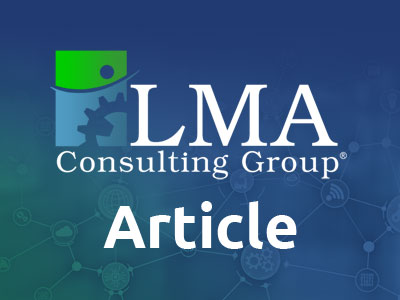In the last few years, I’ve spent significant time studying businesses and investments, and I found a commonality for achieving results – leverage. Leverage is the advantage or power gained by using a lever. A classic example is the story of David and Goliath, where David was able to defeat Goliath because David used the power of leverage (by using a slingshot to defeat a giant). In my experience, leverage has consistently shown up as a commonality in the companies and/or projects that achieved business success. A few of the keys are as follows:
#1) Forms of Leverage – there are many forms of leverage – money, resources (people), machines/ equipment, systems, etc. The key is to take a step back from your situation or issue and think about leverage options. Although it will take additional time vs. beginning the task, it could save significant cost and/or produce significantly quicker, more sustainable and significant results. I’ve found this to be the critical step that is often overlooked. It is a common problem to have many more tasks requiring completion than is possible to achieve within the specified timeframe, and so employees are often overwhelmed and don’t have time to “put their feet up and think”. One of the most powerful forms of leverage is the power of your mind. Sounds too simple to be true? Be radical and experiment with this concept on one project….the results will likely be staggering.
#2) People – another of the most powerful forms of leverage is people. In one example in working with a company to improve profitability, the finance leaders suggested labor cost reduction as the key to success – a common suggestion / reaction when cost reduction is required. However, in this case, labor costs were the minority cost element, whereas materials and freight were far larger (a few grains of sand in a bucket). Sure, it was possible to reduce labor costs and improve profitability; however, the effort spent on the ‘grain of sand’ wasn’t worth it. Instead, implementing the opposite of the suggestion (finding the best resources, and adding resources as it made sense) was the key to improving profitability. Leveraging people’s thinking power and implementation follow through in determining how to reduce raw material and freight costs was the critical success factor.
#3) Financial Leverage – what is the similarity between financial leverage and utilizing equipment in a plant? Quite a bit. In a plant, one of the purposes of equipment is to automate processes (hand packing boxes vs. utilizing an automatic packing machine). Therefore, utilizing the equipment typically speeds up the process, reduces the likelihood of human errors, and reduces the cost of production (increases your return). Similarly, when borrowing money to invest in real estate or another investment, the borrowed money (debt) allows you to use a smaller amount of cash to purchase a larger investment that will provide a return based on the leveraged amount (not the cash you put into the investment). A 10% return on $10,000 cash vs. a $200,000 investment (such as a house) is significant.
Leverage doesn’t have to require significant capital investment or complexity. It is possible for everyone to utilize leverage to improve personal, business and investment results.



